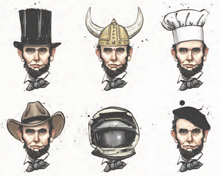This week, Valve's hipper-than-thou employee handbook was unleashed on the Internet, to much envy and amusement. Companies like Valve, Zappos, and Facebook spill on how they maintain continuity and culture using clever onboarding practices and simple reassurance.

In Douglas Adams’ famous book series, The Hitchhiker's Guide To The Galaxy, space traveler Arthur Dent carries with him a galactic guidebook with the two words on the cover: “Don’t Panic.” Solid advice for a hapless spaceman. And perhaps for new hires, too.
 On the first day of work, employees at Valve Software are handed a 56-page employee handbook (which hit the Internet this week, and where we got the illustrations in this story) and a desk with wheels. They’re then told to find something to work on. Appropriately, the handbook preface reads, “This handbook is about...how not to freak out now that you’re here.”
For many, the first few days at a new job feel like life on a new planet. According to the Wynhurst Group, an HR consulting firm in Arlington, VA, 22% of staff turnover occurs in the first 45 days of employment. However, Wynhurst reports, “New employees who went through a structured on-boarding program were 58% more likely to be with the organization after three years.”
Valve, maker of popular video games like Half-Life and Portal, hires at least two or three new people each month, according to product designer and founding team member Greg Coomer. He says bewildered newbies used to take six months to acclimate to the company’s nontraditional culture and “flat” management structure. Because Valve’s work environment is so unique, Coomer says, “The same kinds of conversations kept happening over and over” as green employees came aboard.
On the first day of work, employees at Valve Software are handed a 56-page employee handbook (which hit the Internet this week, and where we got the illustrations in this story) and a desk with wheels. They’re then told to find something to work on. Appropriately, the handbook preface reads, “This handbook is about...how not to freak out now that you’re here.”
For many, the first few days at a new job feel like life on a new planet. According to the Wynhurst Group, an HR consulting firm in Arlington, VA, 22% of staff turnover occurs in the first 45 days of employment. However, Wynhurst reports, “New employees who went through a structured on-boarding program were 58% more likely to be with the organization after three years.”
Valve, maker of popular video games like Half-Life and Portal, hires at least two or three new people each month, according to product designer and founding team member Greg Coomer. He says bewildered newbies used to take six months to acclimate to the company’s nontraditional culture and “flat” management structure. Because Valve’s work environment is so unique, Coomer says, “The same kinds of conversations kept happening over and over” as green employees came aboard.

If you find yourself walking down the hall one morning with a bowl of fresh fruit and Stumptown-roasted espresso, dropping off your laundry to be washed, and heading into one of the massage rooms, don’t freak out. All these things are here for you to actually use.
And don’t worry that somebody’s going to judge you for taking advantage of it—relax! And if you stop on the way back from your massage to play darts or work out in the Valve gym or whatever, it’s not a sign that this place is going to come crumbling down like some 1999-era dot-com startup. If we ever institute caviar-catered lunches, though, then maybe something’s wrong. Definitely panic if there’s caviar.
So a group of Valvers cobbled together a survival guide, complete with mock org-charts and drawings of gun-belted video game characters cooking dinner. The book immediately leaked to the Internet, evoking headlines like “It’s Amazing” and reviews declaring Valve the “best company ever.” More importantly for Valve, the book’s already helped shorten the time hires take to assimilate into the company culture. “The response internally from new people and Valve veterans has been tremendously positive,” Coomer says.
Company culture is “a result of a tremendous amount of energy,” he adds. “There's a broad understanding that if we don't put that energy into maintaining it, it's very easy for it to erode.”
Zappos, which also hires several employees each month, gives team members an instructional “Core Values” packet and an inspirational, book-bound compilation of pictures and testimonials from every single employee in the company. Then each hire--regardless of position--goes through four weeks of customer service training. “This is because, since customer service is one of our #1 priorities,” says Zappos representative Chelsea Patterson. “We want everyone to be able to experience it.”
Square, a mobile payments startup with 250 employees, takes new hires out to visit local merchants, so employees can meet customers and use the product in the wild. “The [first] week concludes with a walk around San Francisco with our CEO, Jack Dorsey, who speaks to the guiding principles of the company,” explains a Square spokesperson.
 At Facebook, things change quickly, so the 3,500-employee company uses an internal wiki to keep people on the same page, says communications representative Alex Hollander. “Every new employee at Facebook will spend the first day and a half in an onboarding session where they will learn about the company,” she says. “However, the engineers will continue on to a six-week onboarding program called Bootcamp. Every single engineer, whether coming in as a VP or recent grad, goes through Bootcamp, where they learn the codebase by fixing bugs, learn about our culture, meet engineering teams to hear about their projects, and ultimately choose the team they will work with.”
Choosing teams is part of Valve’s onboarding process as well. Employees wheel their desks over to projects they want to contribute to, perhaps sometimes clutching the manual, thumb holding Page 19 open to the part that says “don’t freak out.”
At Facebook, things change quickly, so the 3,500-employee company uses an internal wiki to keep people on the same page, says communications representative Alex Hollander. “Every new employee at Facebook will spend the first day and a half in an onboarding session where they will learn about the company,” she says. “However, the engineers will continue on to a six-week onboarding program called Bootcamp. Every single engineer, whether coming in as a VP or recent grad, goes through Bootcamp, where they learn the codebase by fixing bugs, learn about our culture, meet engineering teams to hear about their projects, and ultimately choose the team they will work with.”
Choosing teams is part of Valve’s onboarding process as well. Employees wheel their desks over to projects they want to contribute to, perhaps sometimes clutching the manual, thumb holding Page 19 open to the part that says “don’t freak out.”
[Illustrations: Valve Handbook for New Employees]